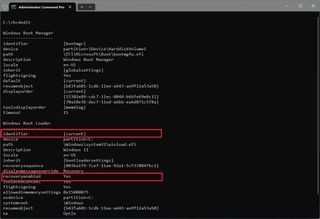Automatic Repair is a built-in feature in Windows 10 and 11 designed to automatically diagnose and fix common startup problems. When your computer fails to boot correctly, this feature kicks in to try and resolve the issue, allowing your system to start normally. Typically, if Windows fails to start twice, on the third attempt, Automatic Repair is triggered. It runs diagnostic tests to identify and repair issues that prevent successful startup.
While Automatic Repair is helpful in many situations, there are times when you might want to disable it. For instance, if you prefer to troubleshoot startup problems manually, or if the Automatic Repair process itself is causing an endless loop, preventing your system from booting properly. In such cases, knowing how to turn off auto repair can be invaluable.
This guide will walk you through the steps to disable the automatic diagnosis and repair feature in both Windows 10 and Windows 11. We will also cover how to re-enable it should you change your mind or find it necessary to revert the changes.
How to Disable Automatic Repair in Windows 10 and 11
Disabling Automatic Repair in Windows is a straightforward process that involves using the Command Prompt. Here’s how to do it:
-
Open Command Prompt as Administrator: Click on the Start button, type “Command Prompt”, right-click on “Command Prompt” in the search results, and select “Run as administrator”. This is crucial as administrative privileges are required to execute the necessary commands.
-
Check Current Boot Configuration: In the Command Prompt window, type the following command and press Enter:
bcdeditThis command displays the Boot Configuration Data. Look for the “Windows Boot Loader” section. Under this section, confirm that the “recoveryenabled” value is set to “Yes” and the “identifier” is set to “{current}”. This confirms the current settings for recovery.
- Disable Automatic Repair: To turn off auto repair, type the following command in the Command Prompt window and press Enter:
bcdedit /set {current} recoveryenabled noThis command modifies the Boot Configuration Data.
bcdeditis the command-line tool for managing boot configuration./set {current}specifies that you are modifying the settings for the current operating system.recoveryenabled nois the parameter that disables the Automatic Repair feature.
Once you have executed this command, Automatic Repair will be disabled. The system will no longer automatically initiate the diagnostic and repair process after multiple unsuccessful boot attempts. You will need to troubleshoot startup issues manually.
How to Enable Automatic Repair in Windows 10 and 11
If you decide to re-enable Automatic Repair, or if it was previously disabled and you want to turn it back on, follow these steps:
-
Open Command Prompt as Administrator: Again, open Command Prompt as administrator using the same method described in the disabling section.
-
Check Current Boot Configuration (Optional): You can again use the
bcdeditcommand to check the current settings. If Automatic Repair is disabled, the “recoveryenabled” value under “Windows Boot Loader” should be set to “No”.
- Enable Automatic Repair: To re-enable the feature, type the following command and press Enter:
bcdedit /set {current} recoveryenabled yesThis command is similar to the disable command, but here,
recoveryenabled yessets the parameter to enable Automatic Repair.
After running this command, Automatic Repair will be enabled once more. If your system encounters startup problems, it will automatically attempt to diagnose and repair them.
In Conclusion
Knowing how to turn off auto repair in Windows 10 and 11 can be a useful skill for advanced users who prefer manual troubleshooting or are facing issues with the Automatic Repair feature itself. While Automatic Repair is a valuable tool for resolving common boot problems, disabling it provides users with greater control over the startup repair process. Remember to re-enable Automatic Repair if you generally prefer the system to handle startup issues automatically. This ensures that you benefit from Windows’ built-in recovery mechanisms when needed.

